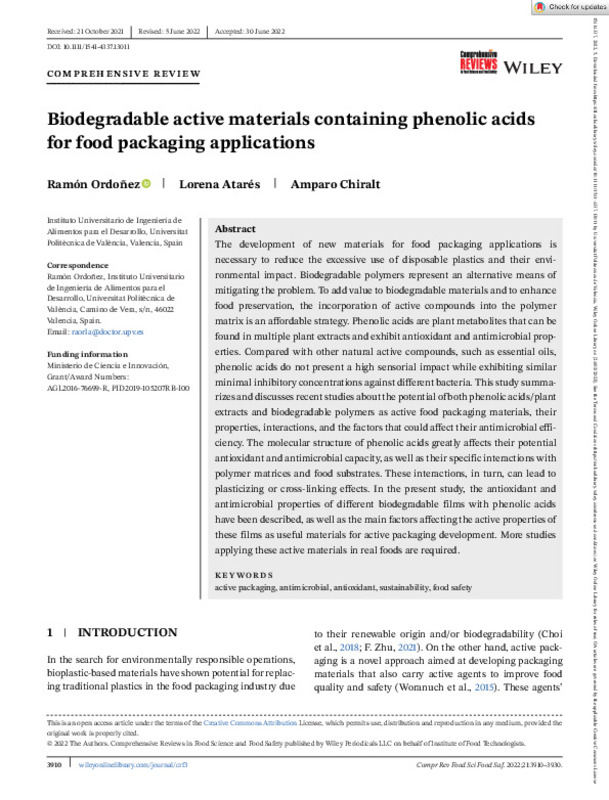JavaScript is disabled for your browser. Some features of this site may not work without it.
Buscar en RiuNet
Listar
Mi cuenta
Estadísticas
Ayuda RiuNet
Admin. UPV
Biodegradable active materials containing phenolic acidsfor food packaging applications
Mostrar el registro completo del ítem
Ordóñez, R.; Atarés Huerta, LM.; Chiralt, A. (2022). Biodegradable active materials containing phenolic acidsfor food packaging applications. Comprehensive Reviews in Food Science and Food Safety. 21(5):3910-3930. https://doi.org/10.1111/1541-4337.13011
Por favor, use este identificador para citar o enlazar este ítem: http://hdl.handle.net/10251/196623
Ficheros en el ítem
Metadatos del ítem
| Título: | Biodegradable active materials containing phenolic acidsfor food packaging applications | |
| Autor: | Ordóñez, Ramón | |
| Entidad UPV: |
|
|
| Fecha difusión: |
|
|
| Resumen: |
[EN] The development of new materials for food packaging applications is necessary to reduce the excessive use of disposable plastics and their environmental impact. Biodegradable polymers represent an alternative means ...[+]
|
|
| Palabras clave: |
|
|
| Derechos de uso: | Reconocimiento (by) | |
| Fuente: |
|
|
| DOI: |
|
|
| Editorial: |
|
|
| Versión del editor: | https://doi.org/10.1111/1541-4337.13011 | |
| Código del Proyecto: |
|
|
| Agradecimientos: |
The authors thank the Agencia Estatal de Investigacion (Ministerio de Ciencia e Innovacion, Spain) for the financial support through projects AGL2016-76699-R and PID2019-105207RB-I00. Author Ramon Ordonez is grateful to ...[+]
|
|
| Tipo: |
|









